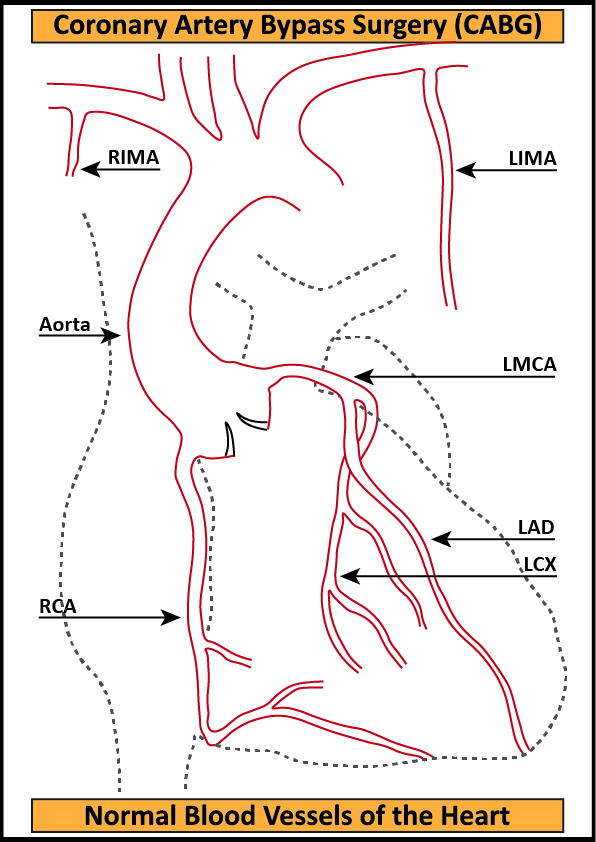Menu
Home / Bypass Surgery / Coronary Artery Bypass Grafting (CABG) Surgery

The muscles of heart require continuous flow of blood and oxygen for its functioning. The heart gets this blood and oxygen from blood vessels called “Coronary Arteries”. There are 2 main coronary arteries, “Left Main Coronary Artery” LCMA & “Right Coronay Artery”. Both these coronary arteries arise from the Aorta. The Left Main Coronary Artery (LMCA) divides into 2 branches, namely Left Anterior Descending Artery (LAD) & Left Circumflex Artery (LCx). Two-thirds of the blood supply to the heart is via the LAD.
The Coronary Arteries can develop blockages. These blockages are called Atherosclerotic Plaques as they develop by a process called Atherosclerosis. Atherosclerosis is the process through which Cholesterol & Calcium is deposited inside the arteries.
Coronary Artery Bypass Graft (CABG) Surgery is a procedure in which a healthy blood vessel (artery or vein) is harvested from other location of the patient & used to form a detour (bypass) around a blockage in a coronary artery. The original blockage in the Coronary Artery is left untouched. The Graft now provides adequate blood supply to the heart muscle while bypassing the blockage and corrects the demand supply mismatch. Hence CABG eliminates the risk of a Heart Attack. Globally, Coronary Artery Bypass Grafting (CABG) is by far the most frequently performed surgical procedure. There are 2 approaches to performing Coronary Artery Bypass Graft (CABG) Surgery.

Minimally Invasive CABG: A small incision is made through the rib cage to access the heart. The procedure requires special instruments and techniques. This approach has its own limitations and is not applicable in all cases.

The blood vessel harvested to be used as a “Graft” determines the type of Coronary Artery Bypass Graft (CABG) Surgery performed. These include:


Radial Artery Grafting: The Radial Artery is harvested from the non dominant forearm.
When both Internal Thoracic Arteries or a combination of one Internal Thoracic Artery and One Radial Artery is used, the procedure is called Total Arterial Bypass Grafting.
In the past, CABG was performed by cardiac surgeons using a heart-lung machine. This machine allowed temporary stoppage of the heart while connecting the graft to the Coronary Artery. Latest advances in Cardiac Surgery have allowed some trained Cardiac Surgeons to perform CABG without using the heart-lung machine. This revolutionary technique is called “Beating Heart” or “Off-Pump Surgery”.
Though technically more demanding on the Cardiac Surgeon, the benefits to the patient are significant. Almost all our CABG procedures are performed with “Beating Heart” technique. As a result, the patients spends less time in the ICU; requires less blood transfusions; avoiding complications; & significantly shorter hospital stay.

+91 9011 471 900

Lorem ipsum dolor sit amet consectetur adipiscing elit ut elit el tellus, luctus nec ullamcorper mattiso amatug.
Quick Links
Information
+91 9011 471 900
+91 8087 906 767
drdhairyasheelkanase@gmail.com
Location
Balewadi Phata, Baner, Pune
Copyright 2024 © All Right Reserved